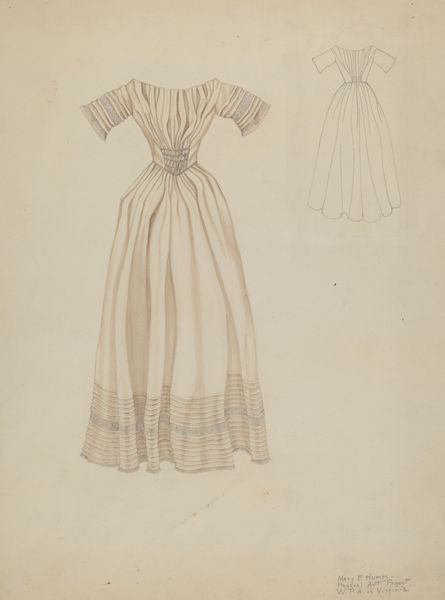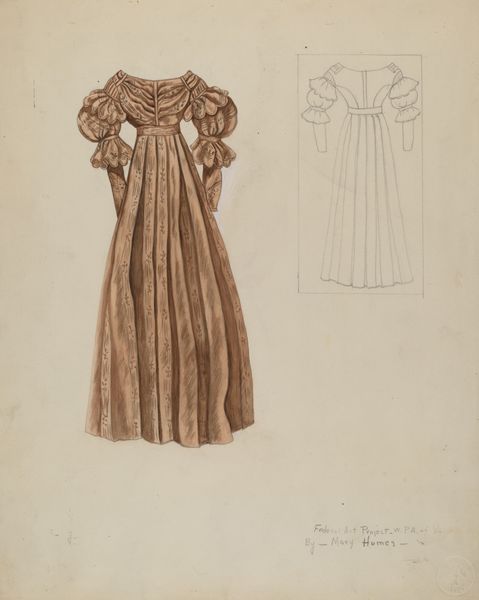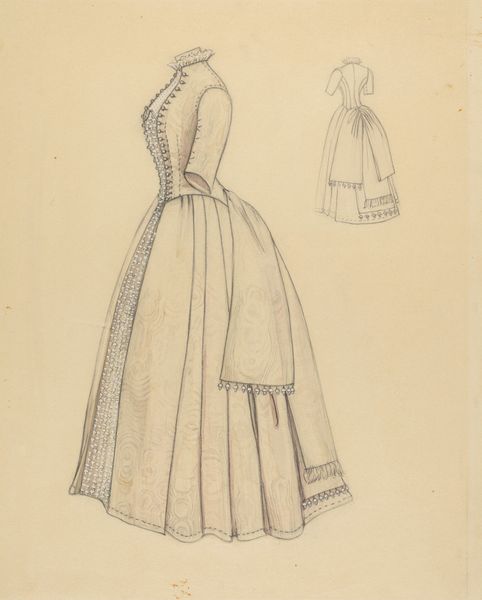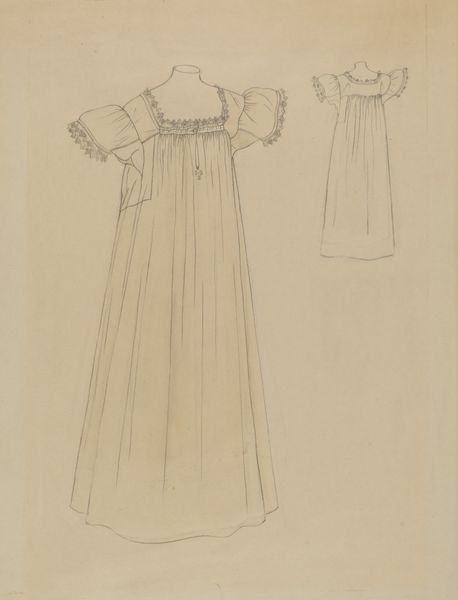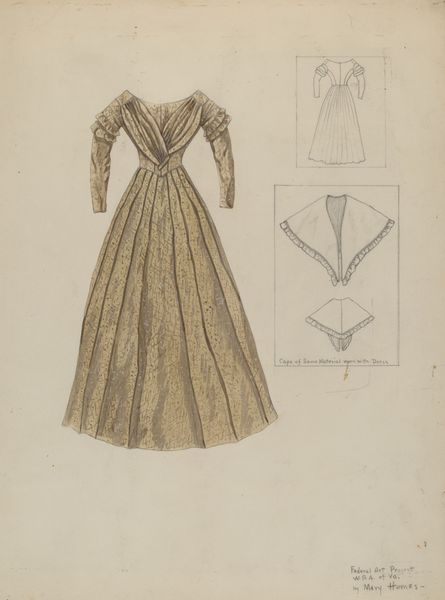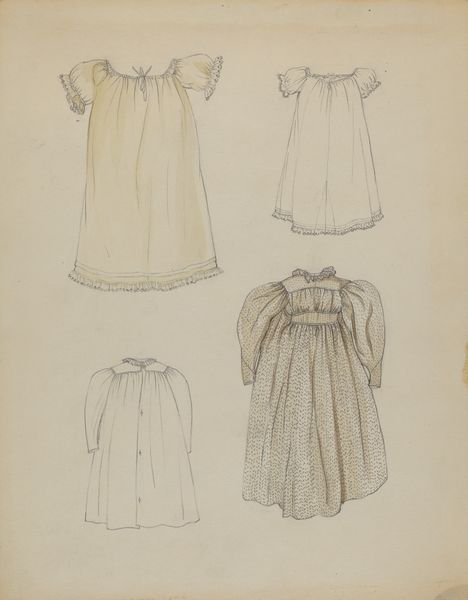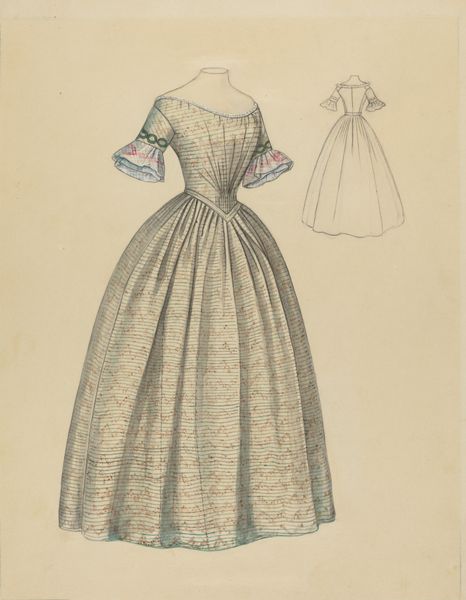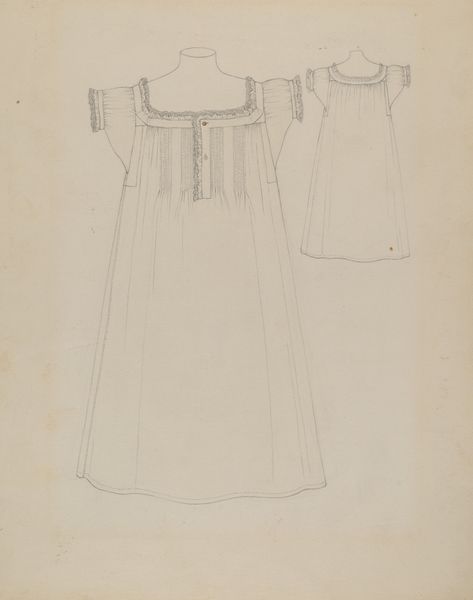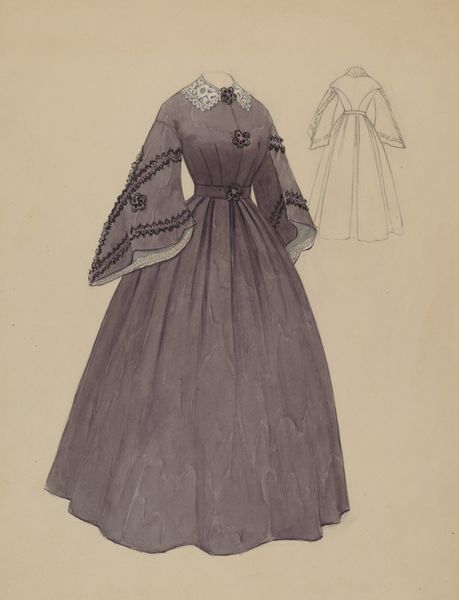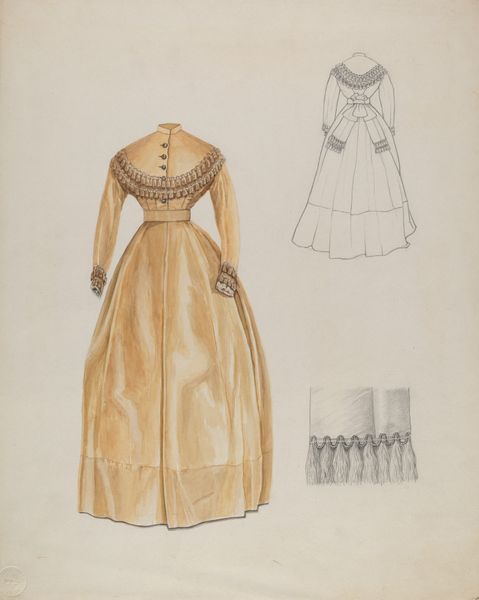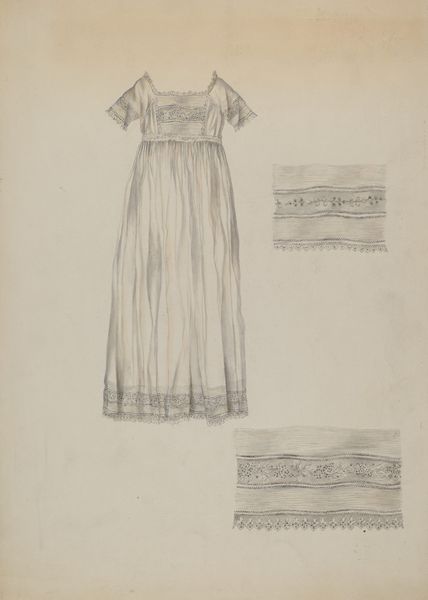
drawing, paper, pencil
#
portrait
#
drawing
#
imaginative character sketch
#
toned paper
#
light pencil work
#
narrative-art
#
pencil sketch
#
sketch book
#
paper
#
personal sketchbook
#
pencil
#
sketchbook drawing
#
fashion sketch
#
sketchbook art
#
fantasy sketch
Dimensions: overall: 35.5 x 28.1 cm (14 x 11 1/16 in.)
Copyright: National Gallery of Art: CC0 1.0
Curator: Oh, this sketch exudes a sense of wistful charm. It feels so light, doesn't it? Like a half-remembered dream of a gown. Editor: Indeed. This piece, titled "Wedding Dress," dates back to around 1937 and is attributed to Mary E. Humes. It's a pencil drawing on paper, part of her personal sketchbook, if I remember correctly. Curator: "Wedding Dress," you say? Looking at the puff sleeves and that sweet bow, it has such an ethereal quality. It almost feels like a memory or a longing rendered in pencil. Editor: I find it fascinating how the very choice of materials—the humble pencil, the toned paper—speaks volumes about the economic realities of the time and how even fashion designs were born out of resourcefulness. Humes likely wouldn’t have been creating designs from luxury textiles. Curator: True. And look at how the detailed skirt gives way to just the barest outline of a secondary dress to the right of it. I see this sense of potential versus reality... of something unfinished or fleeting, the dress that could be. Editor: Or maybe the one she designed earlier in the process! The artist used light pencil work with detailed patterning and forms against simple outlines that point toward the complex processes of material production that design involves. Consider also that it was created under the auspices of the Works Progress Administration in Virginia—likely influencing both style and subject. Curator: I hadn't thought about the WPA's influence, but that context makes so much sense. It really reshapes the drawing. And what I first perceived as simplicity now seems very deliberate—almost pointed. Editor: Exactly. It's not merely a pretty sketch of a dress; it’s a document of design under constraint, reflecting societal concerns of its era. How clothes might signify hope while the process of making them stays grounded in production Curator: I love how something that appears, at first glance, quite gentle can actually contain layers of historical context and socio-economic meaning. It's like the dress itself, both delicate and functional at the same time. Editor: A sentiment worth holding on to as we go forward. It makes you wonder, doesn't it, what other hidden stories everyday objects might hold.
Comments
No comments
Be the first to comment and join the conversation on the ultimate creative platform.
